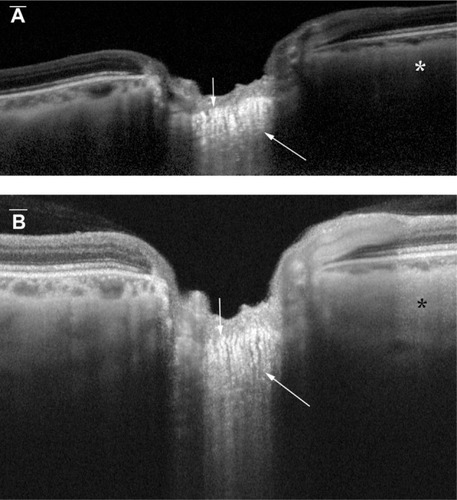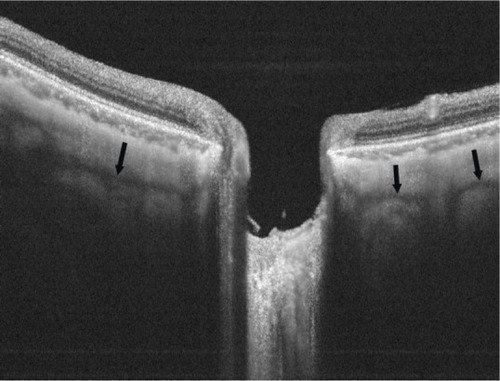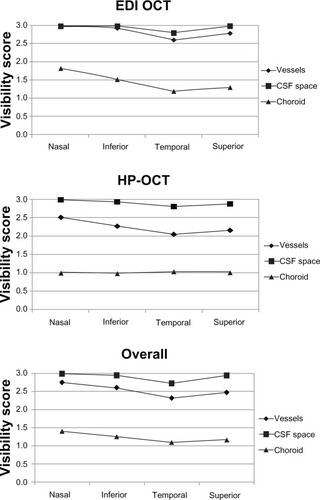Figures & data
Figure 1 (A) Vertical EDI OCT and (B) HP-OCT images of the deep optic nerve head and deep peripapillary structures.
Abbreviations: EDI OCT, enhanced-depth imaging optical coherence tomography; HP-OCT, high-penetration optical coherence tomography.

Figure 2 Representative HP-OCT image showing scleral vessels.
Abbreviation: HP-OCT, high-penetration optical coherence tomography.

Table 1 Mean subjective visibility scores with EDI OCT and HP-OCT, for deep the ONH and parapapillary structures
Figure 3 Mean visibility scores of the deep peripapillary structures, by quadrant.
Abbreviations: CSF, cerebrospinal fluid; EDI OCT, enhanced-depth imaging optical coherence tomography; HP-OCT, high-penetration optical coherence tomography.

Table 2 Mean visibility scores of the deep ONH structures in horizontal and vertical images using EDI OCT, HP-OCT, and overall